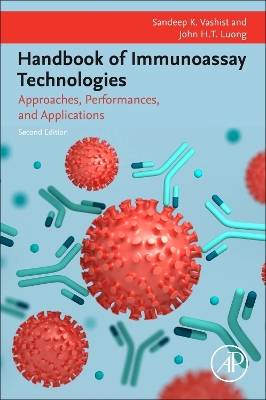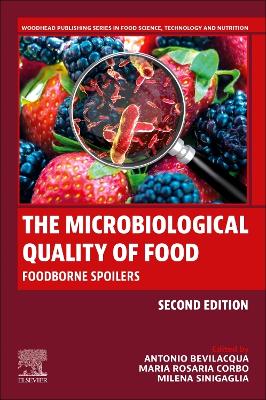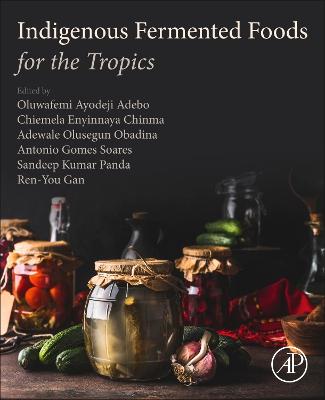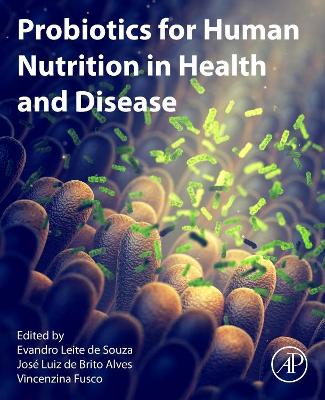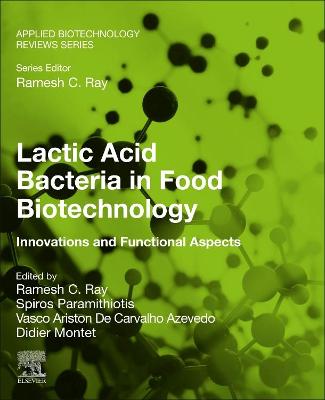Microbiological Analysis of Foods and Food Processing Environments
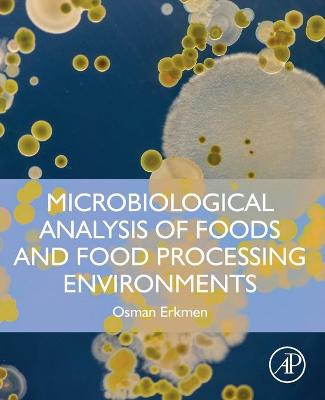 -10%
portes grátis
-10%
portes grátis
Microbiological Analysis of Foods and Food Processing Environments
Erkmen, Osman
Elsevier Science & Technology
12/2021
600
Mole
Inglês
9780323916516
15 a 20 dias
1090
Descrição não disponível.
SECTION I General Food Microbiology Analyzing Practices
1. Sampling and Sample Preparation Techniques
2. Plate Count Techniques
3. Direct Microscopic Count Techniques
4. Most Probable Number Technique
5. Membrane Filter Techniques
6. Yeasts and Molds Counting Techniques
7. Sanitation Detection Techniques in Food Processing Plants
SECTION II Counting of Important Microbial Groups from Food Products
8. Injured Microorganisms and Viable but non-Culturable Cells
9. Counting of Cold-Tolerant Microorganisms
10. Counting of Mesophilic and Thermophilic Sporeformers
11. Counting of Halophilic, Osmophilic and Xerophilic Microorganisms
12. Counting of Thermoduric Microorganisms
Section III Isolation and Counting of Indicator and Pathogenic Microorganisms
13. Isolation and Counting of Coliforms and Escherichia coli
14. Isolation and Counting of Enterococcus
15. Isolation and Counting of Salmonella
16. Isolation and Counting of Listeria monocytogenes
17. Isolation and Counting of Campylobacter jejuni
18. Isolation and Counting of Yersinia enterocolitica
19. Isolation and Counting of Bacillus cereus
20. Isolation and Counting of Clostridium perfringens
21. Isolation and Counting of Staphylococcus aureus
22. Isolation of Clostridium botulinum
23. Isolation and Counting of Vibrio
24. Isolation and Counting of Shigella dysenteriae
25. Isolation and Counting of Brucella
26. Isolation and Counting of Aeromonas hydrophila
27. Isolation and Counting of Plesiomonas shigelloides
SECTION IV Detection of Toxigenic Fungi, Viruses and Parasites
28. Isolation and Counting of Toxigenic Fungi
29. Isolation of Foodborne and Waterborne Viruses, and Typing Techniques
30. Detection of Foodborne and Waterborne Parasites
SECTION V Identification of Foods Safety and Quality
31. Analysis of Milk and Milk Products
32. Analysis of Meat, Poultry and their Products
33. Analysis of Fermented Foods
34. Analysis of Fruits, Vegetables and Precooked Frozen Foods
35. Analysis of Fruit Juice and Concentrate Fruits
36. Analysis of Eggs and Egg Products
37. Analysis of Cereals and Cereal Products
38. Analysis of Seafoods
39. Analysis of Canned Foods
40. Analysis of Salad Dressings and Spices
41. Analysis of Bottled Soft Drinks
42. Analysis of Bottled and Process Water
1. Sampling and Sample Preparation Techniques
2. Plate Count Techniques
3. Direct Microscopic Count Techniques
4. Most Probable Number Technique
5. Membrane Filter Techniques
6. Yeasts and Molds Counting Techniques
7. Sanitation Detection Techniques in Food Processing Plants
SECTION II Counting of Important Microbial Groups from Food Products
8. Injured Microorganisms and Viable but non-Culturable Cells
9. Counting of Cold-Tolerant Microorganisms
10. Counting of Mesophilic and Thermophilic Sporeformers
11. Counting of Halophilic, Osmophilic and Xerophilic Microorganisms
12. Counting of Thermoduric Microorganisms
Section III Isolation and Counting of Indicator and Pathogenic Microorganisms
13. Isolation and Counting of Coliforms and Escherichia coli
14. Isolation and Counting of Enterococcus
15. Isolation and Counting of Salmonella
16. Isolation and Counting of Listeria monocytogenes
17. Isolation and Counting of Campylobacter jejuni
18. Isolation and Counting of Yersinia enterocolitica
19. Isolation and Counting of Bacillus cereus
20. Isolation and Counting of Clostridium perfringens
21. Isolation and Counting of Staphylococcus aureus
22. Isolation of Clostridium botulinum
23. Isolation and Counting of Vibrio
24. Isolation and Counting of Shigella dysenteriae
25. Isolation and Counting of Brucella
26. Isolation and Counting of Aeromonas hydrophila
27. Isolation and Counting of Plesiomonas shigelloides
SECTION IV Detection of Toxigenic Fungi, Viruses and Parasites
28. Isolation and Counting of Toxigenic Fungi
29. Isolation of Foodborne and Waterborne Viruses, and Typing Techniques
30. Detection of Foodborne and Waterborne Parasites
SECTION V Identification of Foods Safety and Quality
31. Analysis of Milk and Milk Products
32. Analysis of Meat, Poultry and their Products
33. Analysis of Fermented Foods
34. Analysis of Fruits, Vegetables and Precooked Frozen Foods
35. Analysis of Fruit Juice and Concentrate Fruits
36. Analysis of Eggs and Egg Products
37. Analysis of Cereals and Cereal Products
38. Analysis of Seafoods
39. Analysis of Canned Foods
40. Analysis of Salad Dressings and Spices
41. Analysis of Bottled Soft Drinks
42. Analysis of Bottled and Process Water
Este título pertence ao(s) assunto(s) indicados(s). Para ver outros títulos clique no assunto desejado.
ATP bioluminescence; Acetic acid bacteria; Achrobacter; Acid tolerant; Aerobic plate; Aeromonas hydrophila; Agar-contact technique; Alicyclobacillus acidoterrestris; Animal pathogen; Bacillary dysentery; Bacillus; Bacteria; Bacterial greening; Bacteriophage; Bacterium; Basidiomycota; Beverage; Biphasic system; Bottled soft drink; Bottled water; Botulism; Breed count; Brucella; Brucellosis; Bysocchlamy; Byssochlamys; Campylobacter jejuni; Canned food; Carbonated soft drink; Cereal; Cholera; Clostridium; Clostridium botulinum; Clostridium perfringens; Coagulase test; Coccobacilli; Cold-tolerant; Coliforms; Concentrate; Confectionery; Cooked meat; Corynebacterium; Crystal formation; Diacetyl test; Diarrheagenic; Eggs; Endospore; Enteric viruses; Enterobacteriaceae; Enterococcus; Enterococcus faecalis; Enterotoxin; Enterotoxins; Erwinia; Escherichia coli; Esculin; Exotoxin; Fecal coliform; Fecal streptococci; Filtration; Flat sour spoilage; Flavobacterium; Flotation; Food; Food handler; Food processing; Foodomics; Frozen food; Fruit juice; Fungi; Gastroenteritis; Geotrichium; Growth unit; Halophilic; Halotolerant Kanagawa test; Heat-labile fluid; Hemolysin; Hemolysis; Hemolytic; Hermetically seal; Heterofermentative; Homofermentative; Howard mold count; Hygienic monitor; Indicator; Inhibitory substance; Injury; Invasive factor; Lactic acid bacteria; Lactic acid fermentation; Lactobacillus; Large meat dishes; Leakage; Legionella; Listeria monocytogenes; Listeriosis; Living microorganism; Lysozyme; Mayonnaise; Meat products
SECTION I General Food Microbiology Analyzing Practices
1. Sampling and Sample Preparation Techniques
2. Plate Count Techniques
3. Direct Microscopic Count Techniques
4. Most Probable Number Technique
5. Membrane Filter Techniques
6. Yeasts and Molds Counting Techniques
7. Sanitation Detection Techniques in Food Processing Plants
SECTION II Counting of Important Microbial Groups from Food Products
8. Injured Microorganisms and Viable but non-Culturable Cells
9. Counting of Cold-Tolerant Microorganisms
10. Counting of Mesophilic and Thermophilic Sporeformers
11. Counting of Halophilic, Osmophilic and Xerophilic Microorganisms
12. Counting of Thermoduric Microorganisms
Section III Isolation and Counting of Indicator and Pathogenic Microorganisms
13. Isolation and Counting of Coliforms and Escherichia coli
14. Isolation and Counting of Enterococcus
15. Isolation and Counting of Salmonella
16. Isolation and Counting of Listeria monocytogenes
17. Isolation and Counting of Campylobacter jejuni
18. Isolation and Counting of Yersinia enterocolitica
19. Isolation and Counting of Bacillus cereus
20. Isolation and Counting of Clostridium perfringens
21. Isolation and Counting of Staphylococcus aureus
22. Isolation of Clostridium botulinum
23. Isolation and Counting of Vibrio
24. Isolation and Counting of Shigella dysenteriae
25. Isolation and Counting of Brucella
26. Isolation and Counting of Aeromonas hydrophila
27. Isolation and Counting of Plesiomonas shigelloides
SECTION IV Detection of Toxigenic Fungi, Viruses and Parasites
28. Isolation and Counting of Toxigenic Fungi
29. Isolation of Foodborne and Waterborne Viruses, and Typing Techniques
30. Detection of Foodborne and Waterborne Parasites
SECTION V Identification of Foods Safety and Quality
31. Analysis of Milk and Milk Products
32. Analysis of Meat, Poultry and their Products
33. Analysis of Fermented Foods
34. Analysis of Fruits, Vegetables and Precooked Frozen Foods
35. Analysis of Fruit Juice and Concentrate Fruits
36. Analysis of Eggs and Egg Products
37. Analysis of Cereals and Cereal Products
38. Analysis of Seafoods
39. Analysis of Canned Foods
40. Analysis of Salad Dressings and Spices
41. Analysis of Bottled Soft Drinks
42. Analysis of Bottled and Process Water
1. Sampling and Sample Preparation Techniques
2. Plate Count Techniques
3. Direct Microscopic Count Techniques
4. Most Probable Number Technique
5. Membrane Filter Techniques
6. Yeasts and Molds Counting Techniques
7. Sanitation Detection Techniques in Food Processing Plants
SECTION II Counting of Important Microbial Groups from Food Products
8. Injured Microorganisms and Viable but non-Culturable Cells
9. Counting of Cold-Tolerant Microorganisms
10. Counting of Mesophilic and Thermophilic Sporeformers
11. Counting of Halophilic, Osmophilic and Xerophilic Microorganisms
12. Counting of Thermoduric Microorganisms
Section III Isolation and Counting of Indicator and Pathogenic Microorganisms
13. Isolation and Counting of Coliforms and Escherichia coli
14. Isolation and Counting of Enterococcus
15. Isolation and Counting of Salmonella
16. Isolation and Counting of Listeria monocytogenes
17. Isolation and Counting of Campylobacter jejuni
18. Isolation and Counting of Yersinia enterocolitica
19. Isolation and Counting of Bacillus cereus
20. Isolation and Counting of Clostridium perfringens
21. Isolation and Counting of Staphylococcus aureus
22. Isolation of Clostridium botulinum
23. Isolation and Counting of Vibrio
24. Isolation and Counting of Shigella dysenteriae
25. Isolation and Counting of Brucella
26. Isolation and Counting of Aeromonas hydrophila
27. Isolation and Counting of Plesiomonas shigelloides
SECTION IV Detection of Toxigenic Fungi, Viruses and Parasites
28. Isolation and Counting of Toxigenic Fungi
29. Isolation of Foodborne and Waterborne Viruses, and Typing Techniques
30. Detection of Foodborne and Waterborne Parasites
SECTION V Identification of Foods Safety and Quality
31. Analysis of Milk and Milk Products
32. Analysis of Meat, Poultry and their Products
33. Analysis of Fermented Foods
34. Analysis of Fruits, Vegetables and Precooked Frozen Foods
35. Analysis of Fruit Juice and Concentrate Fruits
36. Analysis of Eggs and Egg Products
37. Analysis of Cereals and Cereal Products
38. Analysis of Seafoods
39. Analysis of Canned Foods
40. Analysis of Salad Dressings and Spices
41. Analysis of Bottled Soft Drinks
42. Analysis of Bottled and Process Water
Este título pertence ao(s) assunto(s) indicados(s). Para ver outros títulos clique no assunto desejado.
ATP bioluminescence; Acetic acid bacteria; Achrobacter; Acid tolerant; Aerobic plate; Aeromonas hydrophila; Agar-contact technique; Alicyclobacillus acidoterrestris; Animal pathogen; Bacillary dysentery; Bacillus; Bacteria; Bacterial greening; Bacteriophage; Bacterium; Basidiomycota; Beverage; Biphasic system; Bottled soft drink; Bottled water; Botulism; Breed count; Brucella; Brucellosis; Bysocchlamy; Byssochlamys; Campylobacter jejuni; Canned food; Carbonated soft drink; Cereal; Cholera; Clostridium; Clostridium botulinum; Clostridium perfringens; Coagulase test; Coccobacilli; Cold-tolerant; Coliforms; Concentrate; Confectionery; Cooked meat; Corynebacterium; Crystal formation; Diacetyl test; Diarrheagenic; Eggs; Endospore; Enteric viruses; Enterobacteriaceae; Enterococcus; Enterococcus faecalis; Enterotoxin; Enterotoxins; Erwinia; Escherichia coli; Esculin; Exotoxin; Fecal coliform; Fecal streptococci; Filtration; Flat sour spoilage; Flavobacterium; Flotation; Food; Food handler; Food processing; Foodomics; Frozen food; Fruit juice; Fungi; Gastroenteritis; Geotrichium; Growth unit; Halophilic; Halotolerant Kanagawa test; Heat-labile fluid; Hemolysin; Hemolysis; Hemolytic; Hermetically seal; Heterofermentative; Homofermentative; Howard mold count; Hygienic monitor; Indicator; Inhibitory substance; Injury; Invasive factor; Lactic acid bacteria; Lactic acid fermentation; Lactobacillus; Large meat dishes; Leakage; Legionella; Listeria monocytogenes; Listeriosis; Living microorganism; Lysozyme; Mayonnaise; Meat products


